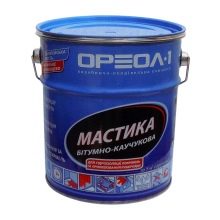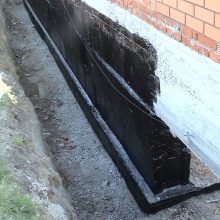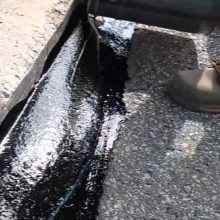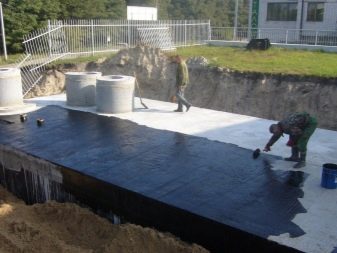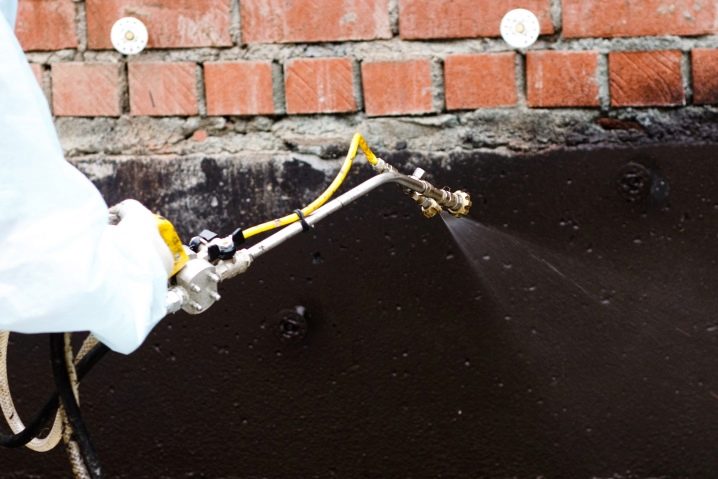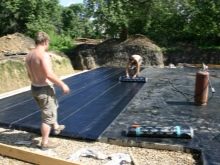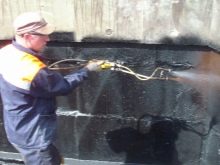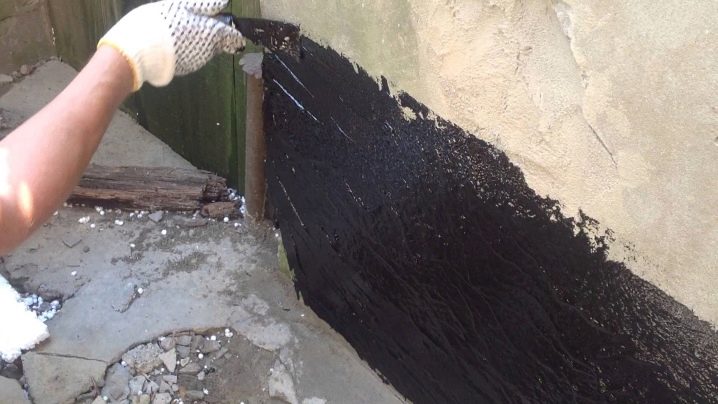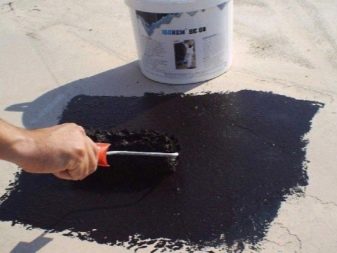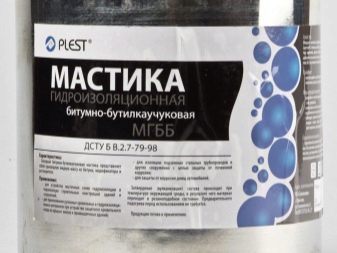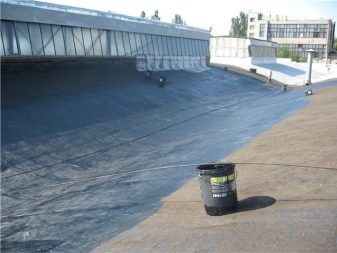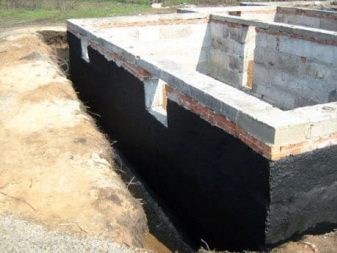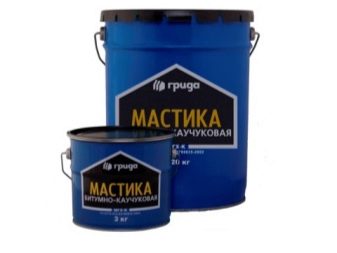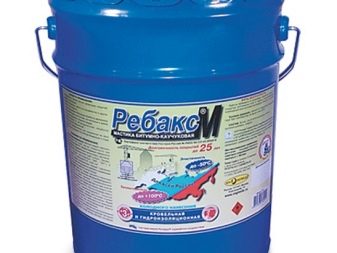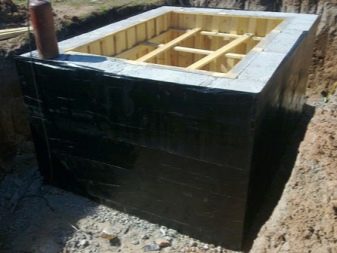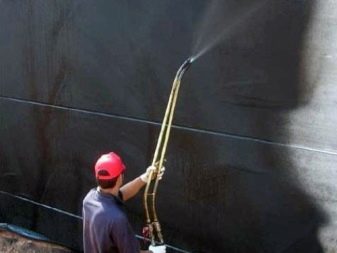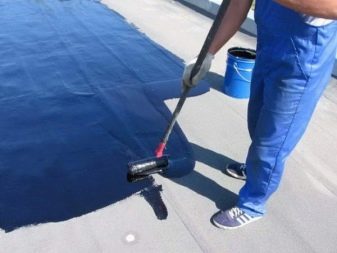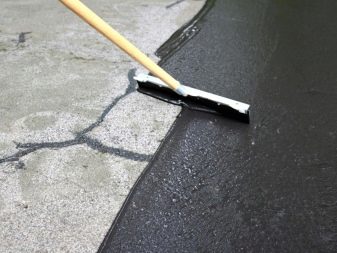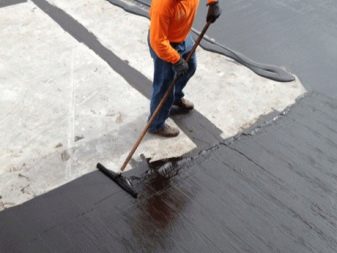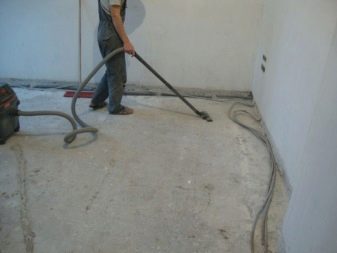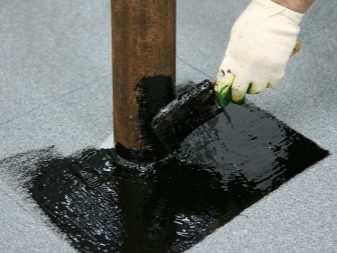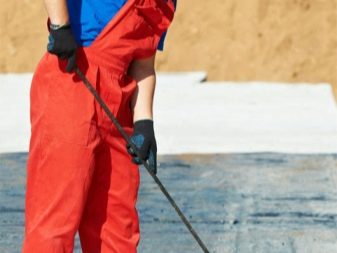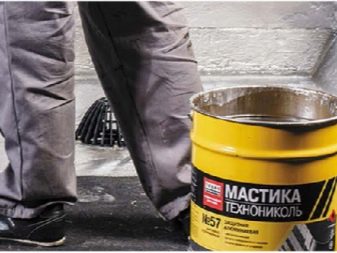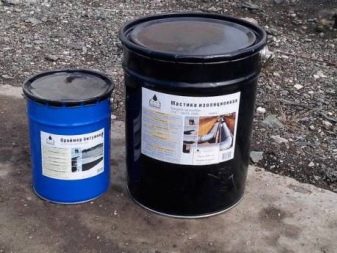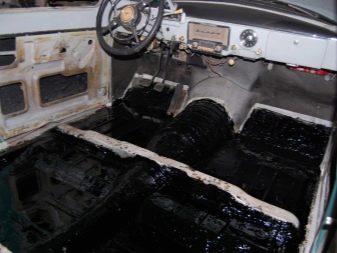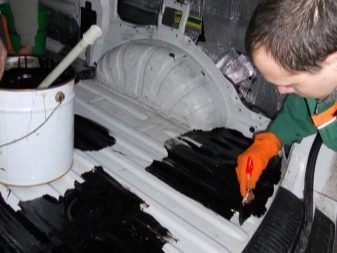Bituminous rubber mastic
The coating of various surfaces, giving them the necessary properties is provided with the help of special mastics. A special place in practice has bitumen-rubber mastic (CCM), the properties of which are useful for almost everyone. The scope of this substance is very diverse, but most often it can be used for waterproofing building structures.
Special features
Bitumen-rubber mastic is different:
- excellent elasticity;
- resistance to heat;
- excellent level of bonding;
- the best resistance to tensile rupture;
- holding mechanical and shock loads of at least 500 kPa.
High-quality mastic retains all these valuable properties at -50 and at +130 degrees. It is not damaged by water and does not crack when in contact with liquid., which allows the use of mixtures such as waterproofing. It has been established experimentally that mastic helps to protect the galvanized material used on surfaces inclined from 0 to 45 degrees from water. The mixture based on bitumen is realized in metal buckets, the net weight ranges from 3 to 42 kg, which allows you to choose the ideal portion. And the use of the composition varies greatly.
Where is mastic used?
Specifications allow using this material:
- lay bitumen roll constructions;
- glue tiles;
- install linoleum and wooden materials under the parquet;
- glue on epps plates.
All these works can be performed both in small repairs and in large-scale construction. Preservation of the properties declared by the manufacturer is guaranteed up to 12 months in a row.
Important: the use of mastic is allowed only during outdoor work or in a thoroughly ventilated room. In the process, you can not smoke and make open fire. Each subspecies of compounds containing rubber has specificity.
Kinds
MGBB stands for waterproofing bitumen-butyl rubber. With this tool you can seal not only the roof, but also the foundations, and the boundaries between the various plates, panels. Advantage MGBB resistance to a wide range of harmful factors: frost, acids, ozone, natural gas. Impermeability to light rays and vapor allows for the highest possible protection of the base.
Composition formed by:
- butyl rubber;
- vulcanizing additives;
- fillers.
MGBB can be applied both hot and cold.
The heated composition dries no more than 20 hours, and when it hardens, no shrinkage occurs. The adhesion of the cooled MGBB to the surface is reached in 24 to 36 hours; the admissible temperatures are not lower than -50 and not higher than +80 degrees.
Mix MGH-K is designed to provide waterproofing of the roof. In addition to bitumen, it includes organic solvent, a thermoplastic polymer, and crumb rubber.
Low viscosity and other characteristics make MGH-K an ideal solution for concrete finishing. On 1 square. m surface consumes 1 kg of mastic.Drying time is 24 hours, border temperatures: -30 and 180 degrees.
Due to such a wide field of permissible conditions MGH-K allows:
- to isolate materials that are not identical in structure and number of pores from water, from metal to bricks;
- close the seams and seal the cracks between the finishing plates;
- glue roll insulation on the roof;
- repair roof structures;
- fix the roads;
- stop the effect of moisture on the foundations, on the walls of the basement and garage;
- compact glass in a frame of metal or wood.
Another attractive type of mastic is Rebacs-M. Its main purpose is waterproofing the roof. Delivery to consumers is carried out in containers of 20 and 50 kg. In addition to works on the roofs, with the help of Rebaks-M, it is possible to protect foundations from water, wood and reinforced concrete structures buried into the ground. Processing of metal products is also allowed.
Chemical composition includes:
- bitumen;
- adhesion promoters;
- rubber;
- corrosion inhibitors.
The exact proportions of all these components and their proper interaction with each other are achieved through the use of an organic solvent.It is possible to apply Rebaks-M with the help of filling and spray equipment, but if you are more accustomed to working with a roller or a brush, there will be no problems either.
Spraying is also difficult because it will be necessary to very carefully select the viscosity of the composition. The minimum operating temperature is 0 degrees, while the humidity of the air over 80% affects the result negatively. It is recommended to apply two or three layers of mastic.
Drying after applying each layer lasts at least 12 hours, and the material ceases to stick only on the fifth day. The final properties of the coating receives a week after installation. During the roofing works, 4 to 6 liters of mastic are spent per 1 square meter. m. Anticorrosion protection requires much less material, only 600–1000 g. The standard color is black; when in contact with an unsaturated salt solution, the mastic will retain its qualities for at least 30 days;
Property Overview
Cold rubber mastic is better hot already because its application is faster and the fire danger is also reduced. The method of application is the same as for varnishes or paints.When the solvent from the created layer evaporates, the coating will harden, forming a strong layer that reliably stops water. Solvent-based blends allow various surfaces to be finished even in the cold. But they also have an Achilles' heel - the final readiness of the applied layer comes in about a week, and then in favorable conditions.
The water emulsion is safe for people and nature, and after a few hours the coating is ready for use.
These positive moments are balanced by negative ones: both water-based bitumen mastics can be used and stored only at positive air temperatures.
Those mixtures that do not include polymers and other additives are primarily suitable for foundations. But the roofing work is best done with modified compositions that are more resistant to strong heating and temperature fluctuations. Polymer mastic is also distinguished by enhanced adhesion, capable of retaining even rolled material.
Adding unprocessed rubber dramatically increases the elasticity and other physical and mechanical parameters.
Important: the resistance of mastic with rubber grows so that it can act as a roofing finish.
Whatever mixture is used, the base is required:
- clean up from all kinds of blockages;
- dry;
- if possible, process the bitumen primer.
Modified compositions, if they add a solvent, may have very different consistency. The service life of the coating can be more than 25 years, while the mastic is suitable for finishing any kind of surfaces. There is no need for specialized equipment, you can do with traditional spatulas, rollers or paint brushes. But the modification of mastic significantly increases its cost compared to simple material. And any cold mix sits down stronger, than hot waterproofing similar to it.
The increased fire danger when using hot mastic is fully justified by its positive properties.
Thus, the presence of the letter “A” in the label indicates the presence of antiseptic additives. And if the package has the designation "G", then the composition has herbicidal properties. Apply the mixture, heated to 160 - 190 degrees, you need only on surfaces that are pre-primed. Hot mastic has no pores, but it is very difficult to apply.
For waterproofing the bottom of the car is often used mastic polymer composition with the addition of epoxy resins. This coating confidently resists even gravel or small pieces of asphalt. The use of bitumen-rubber mixture in principle is unable to provide such an effect.
Orthophosphoric acid is usually used as a chemical protection, which quenches small foci of corrosion, and not just mechanically cutting the metal mechanically. Where it is, unstable oxides cannot be formed, because a stable chemical compound is initially present.
From the video below you will learn how to apply the Bitumast waterproofing mastic.

